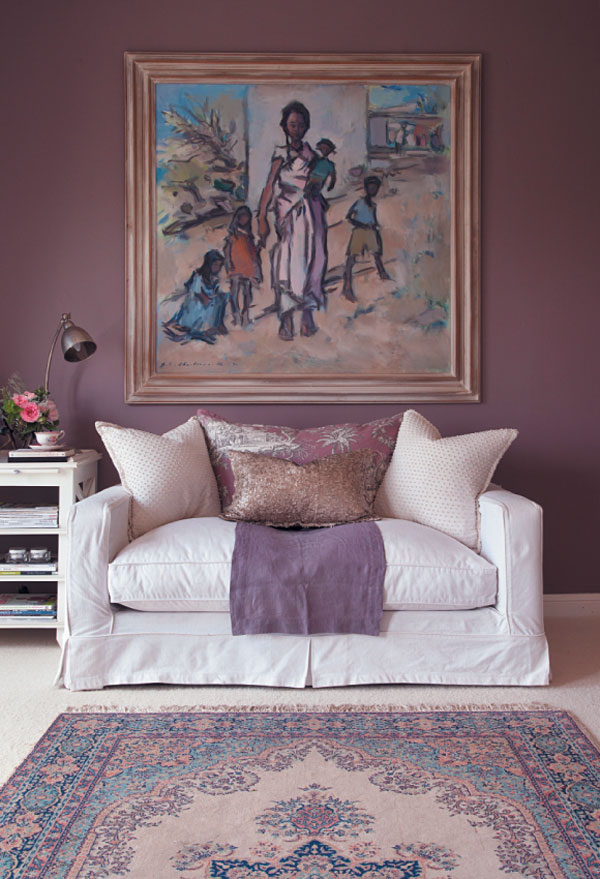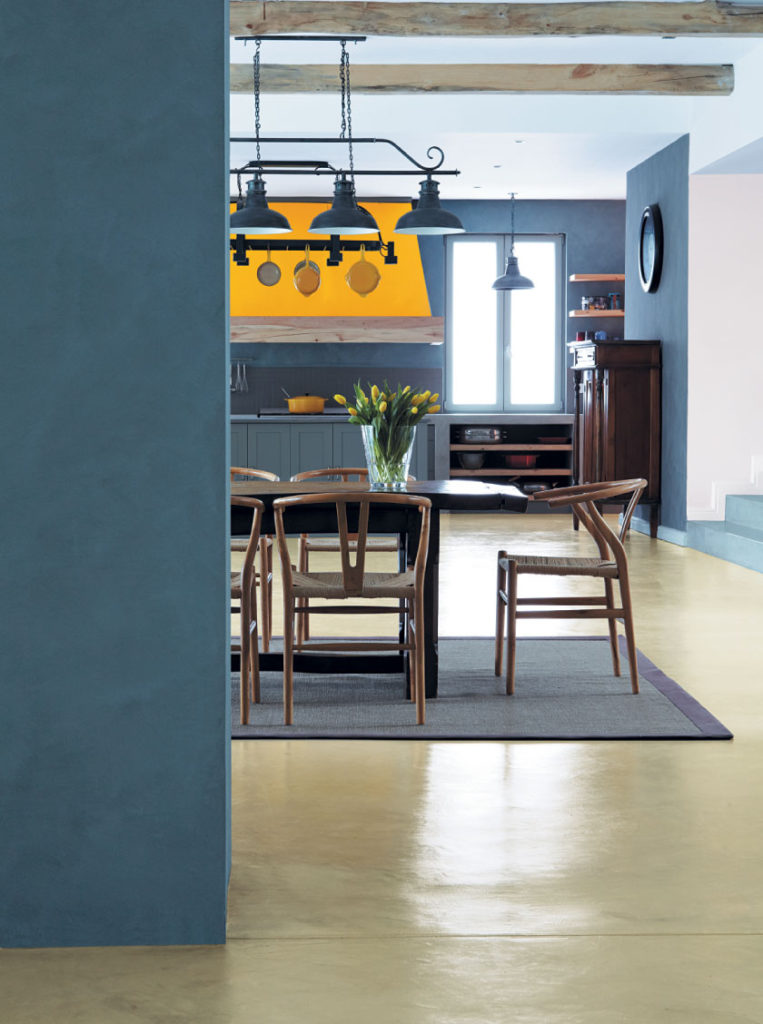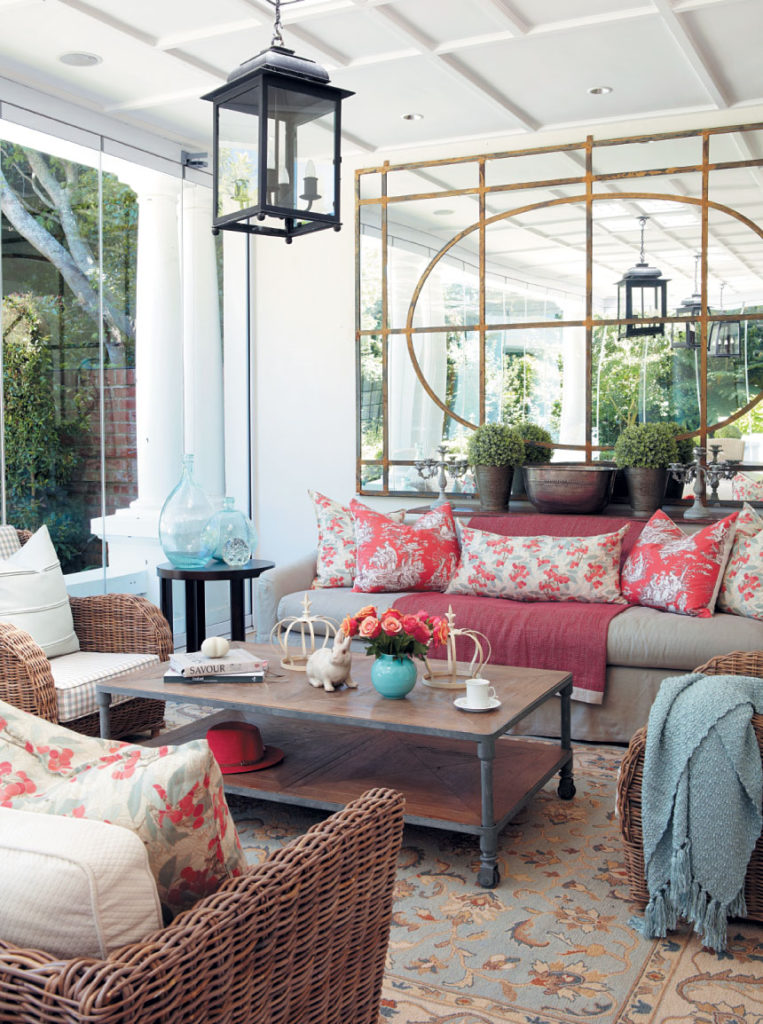We’ve answered some common questions about decorating with colour to give you the confidence to use this season’s on-trend shades to liven up your home
Q: I’d like to choose a new colour scheme, but have no idea where to start. Any suggestions?

A: Durban Interior Designer Lee Moon suggests building a colour scheme around something that you love like a gorgeous piece of fabric or your favourite ornament. “I used a painting by Geoffrey Charlesworth as the inspiration for this living room,” she explains. “I reflected the chalky white hues in the painting in the neutral finishes of the sofa and floor. For the accent colours, I then picked up the dusky rose, creamy lilac and pale blue in the scatters, throw and Persian rug. I chose Plascon’s Cappuccino for the walls as it’s the perfect backdrop for this artwork and pulls the scheme together.”
Q: Should the amount of sunlight a room gets affect the colour scheme I choose for it?
A: “Keep in mind that light has a huge effect on how a colour will look in a room and how it will make that space feel,” says Anne Roselt, Plascon’s Colour Manager. “For hot rooms that get lots of sunlight, select shades of white, pastels, medium blues and turquoises, as well as purples and greens with a blue undertone as they’ll ‘cool’ the space down. Neutrals are fine too, but look for neutrals with a grey undertone as they’ll be ‘cooler’ than those with a warm undertone.
“For cold rooms that don’t get a lot of sunlight, the opposite is true: select colours that have a warmer undertone like red, orange or yellow. If a room is dark, brighten it up with light colours with a yellow undertone or use the darkness to create a sultry moody feel with a deep red or blue.
“The best way to try out a new paint colour is to paint a piece of mounting board (50cm x 50cm), hang it on the wall and leave it there for a day or two,” advises Anne. “Look at it at different times of the day so you’ll notice how the colour changes depending on the light. For instance, when hit by the sun’s glow a shade of lavender may look pinky purple in the morning, but may change to a greyish hue later in the afternoon as the sun moves west. It’s also worth noting that white walls can take on tinges of colour from the surrounding furnishings and even from the plants growing outside.”
Q: I’d like to include a few different shades in one room, but I’m concerned it’ll look like a mishmash of colours. Any advice?

A: “The 60-30-10 rule is a good guideline to follow when creating a colour scheme,” says Anne Roselt. “Choose one colour as your main colour that’ll take up about 60 percent of the space, this is usually your wall colour and in this kitchen it’s grey. The 30 percent should be a colour in a similar shade or tone, which could be used for the carpet or curtains – in this case it’s the neutral furniture and floor. The final 10 percent should be an accent colour, like the pop of bright yellow on this cooker hood.”
Q: When I decorated my home I chose a neutral scheme, but now that I’ve lived with it for a while I feel it’s a bit boring. How can I quickly and easily add a splash of colour?

Before
A: “The beauty of a neutral scheme is that it’s very easy to change the look by simply adding a couple of accessories or swapping out a few soft furnishings. If your budget is tight, scout around the house for objects to fit in with your new colour palette that you can use to dress the space,” advises Cape Town decorator Leigh Wishart. She demonstrates how she took her veranda from calm to colourful by replacing the natural fibre mat with a floral Soumak carpet and trading her existing scatters for those in vibrant shades of coral, burnt orange and blue. Fresh flowers and textured throws were the finishing touch.

After

